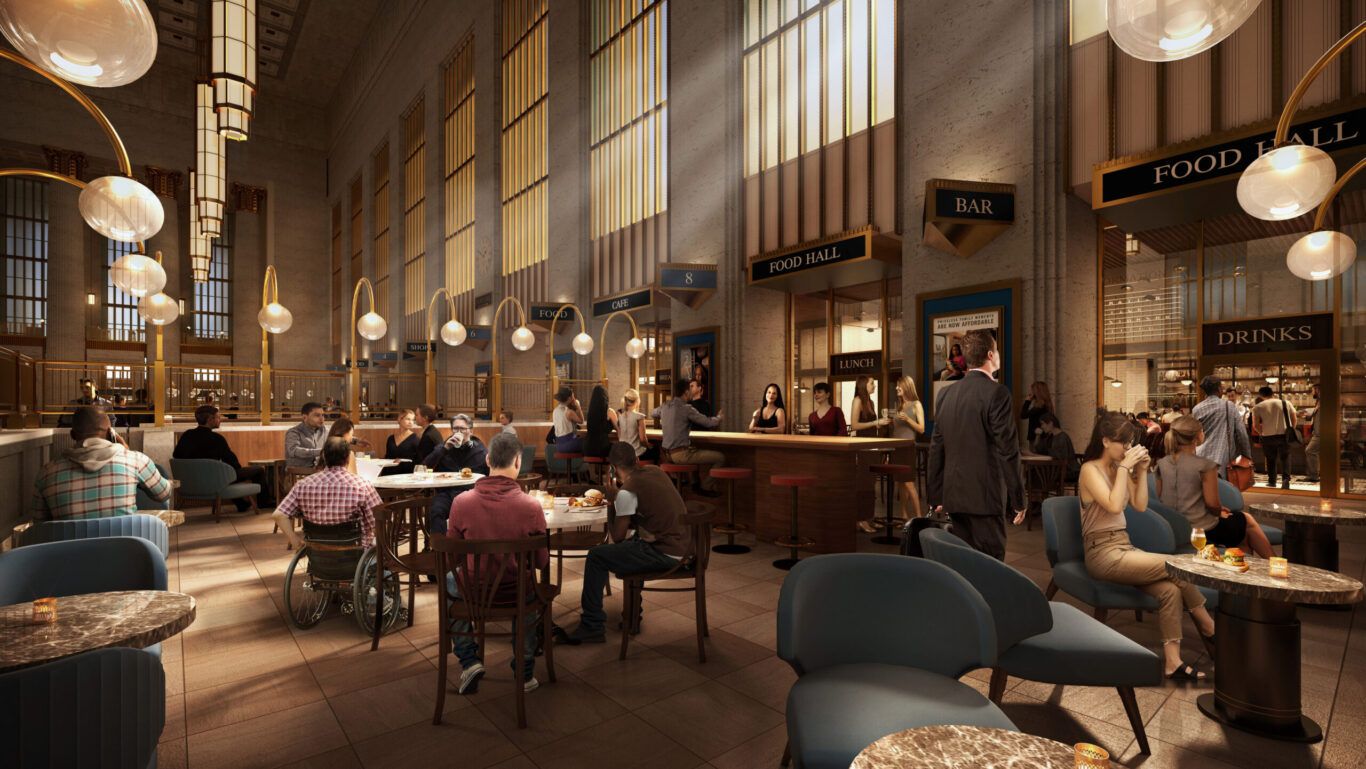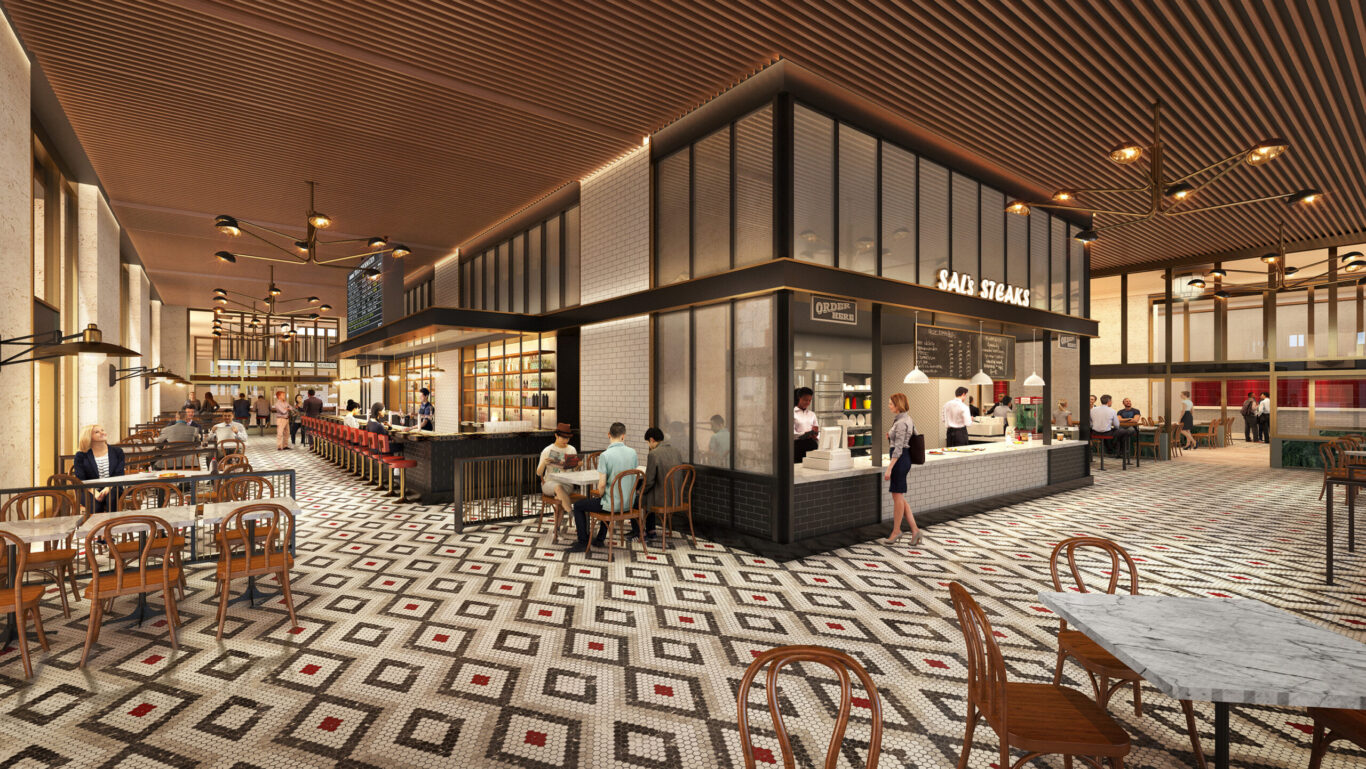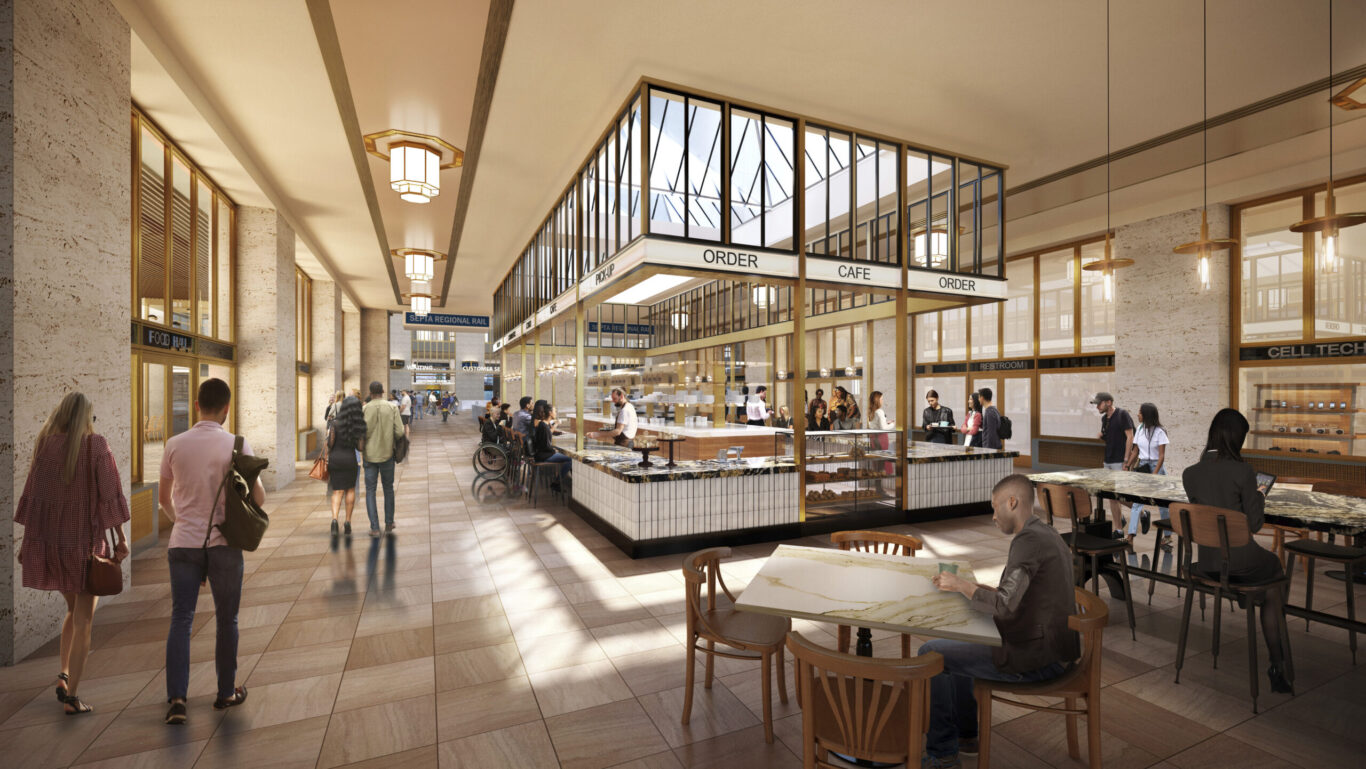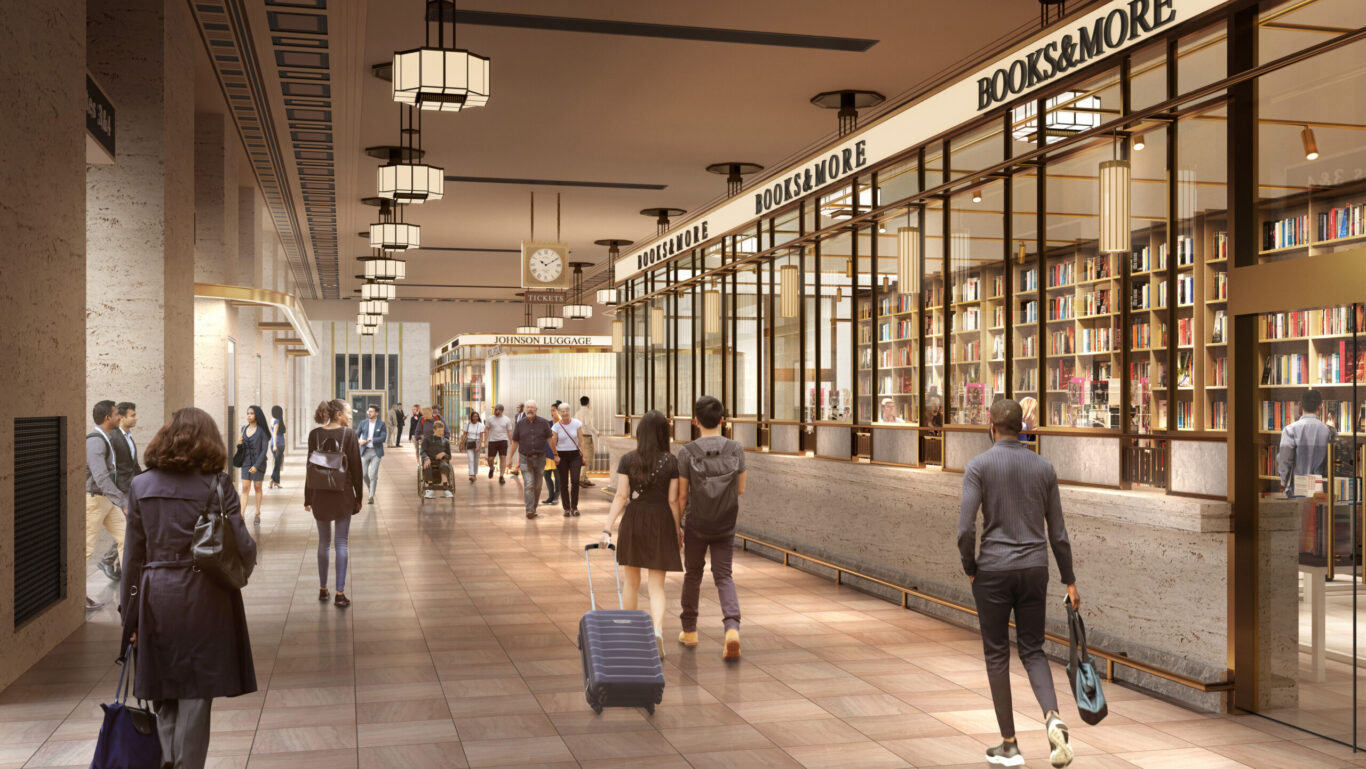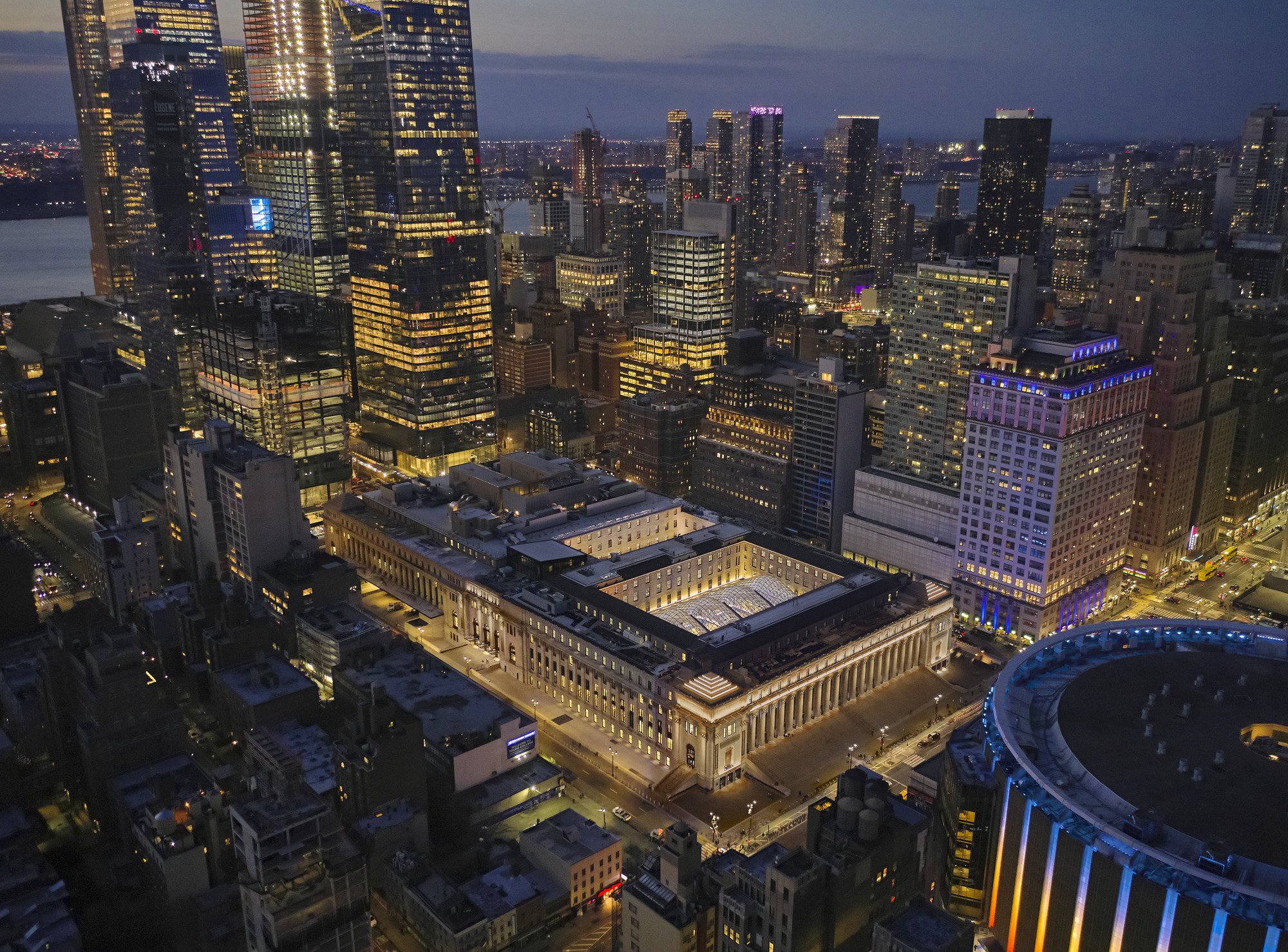Revitalizing a historic asset
In 2016, SOM worked with Amtrak and its partners to create a master plan for Philadelphia’s William H. Gray III 30th Street Station and the surrounding area, envisioning a mixed-use neighborhood with a vibrant public realm centered around transit. The renovation of the station—a Beaux-Arts architectural landmark designed by Graham, Anderson, Probst & White—represents the first phase of this plan. Led by a public-private partnership between Amtrak, Plenary, Vantage, and Johnson Controls, with Gilbane and SOM as the design-build team, the project will transform the travel experience for millions of people every year.

With ridership on the rise, the station’s untenanted retail, vacant northern concourse, limited seating, aging infrastructure, and siloed customer service spaces require an overhaul. The project will modernize and expand the rail hub’s retail areas, extend and pedestrianize its outdoor space, activate its concourse, and consolidate Amtrak’s engineering headquarters within the upper floors. In doing so, the project will fulfill a core goal of the master plan: to create the heart of an equitable, transit-oriented district that bridges Center City and University City.






